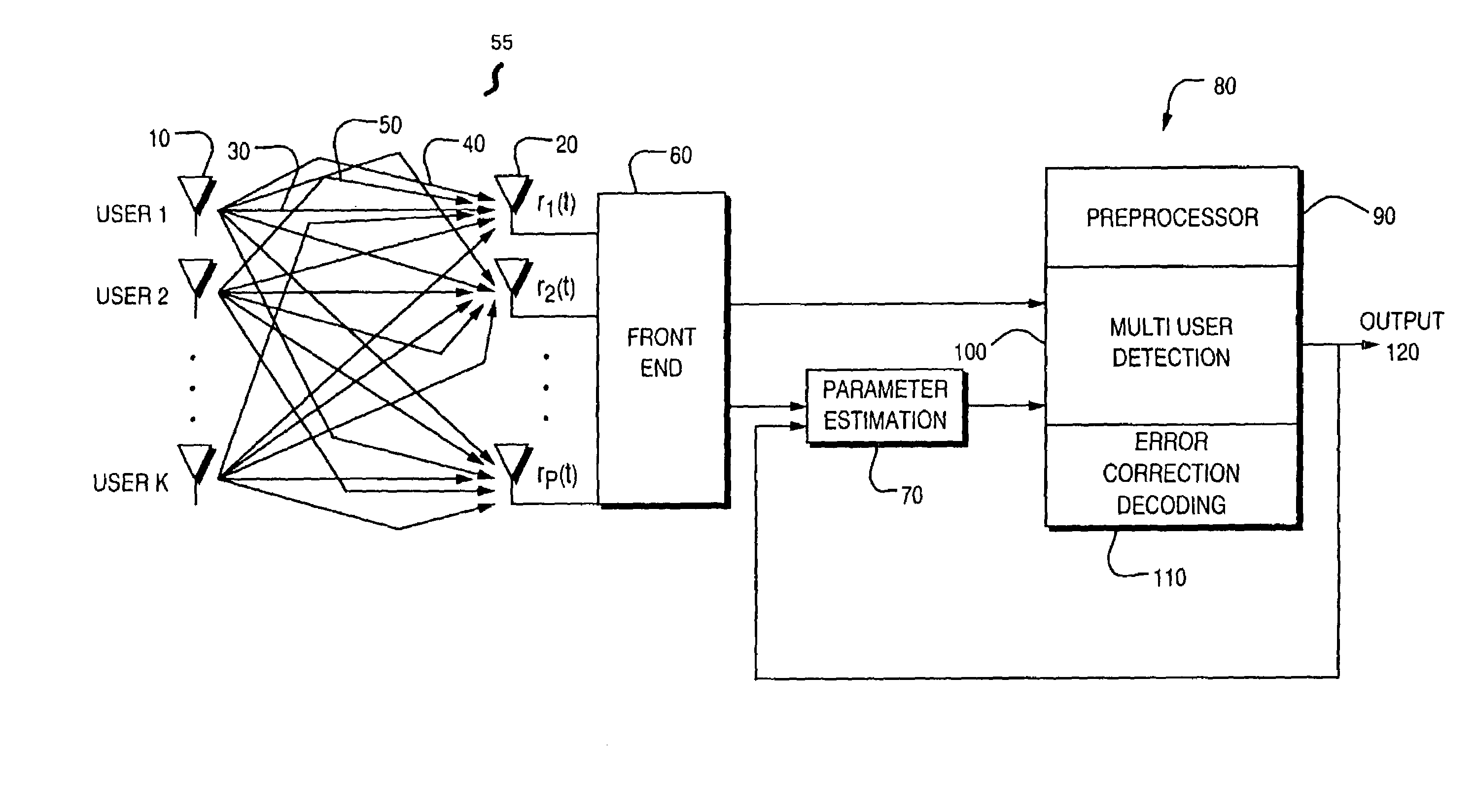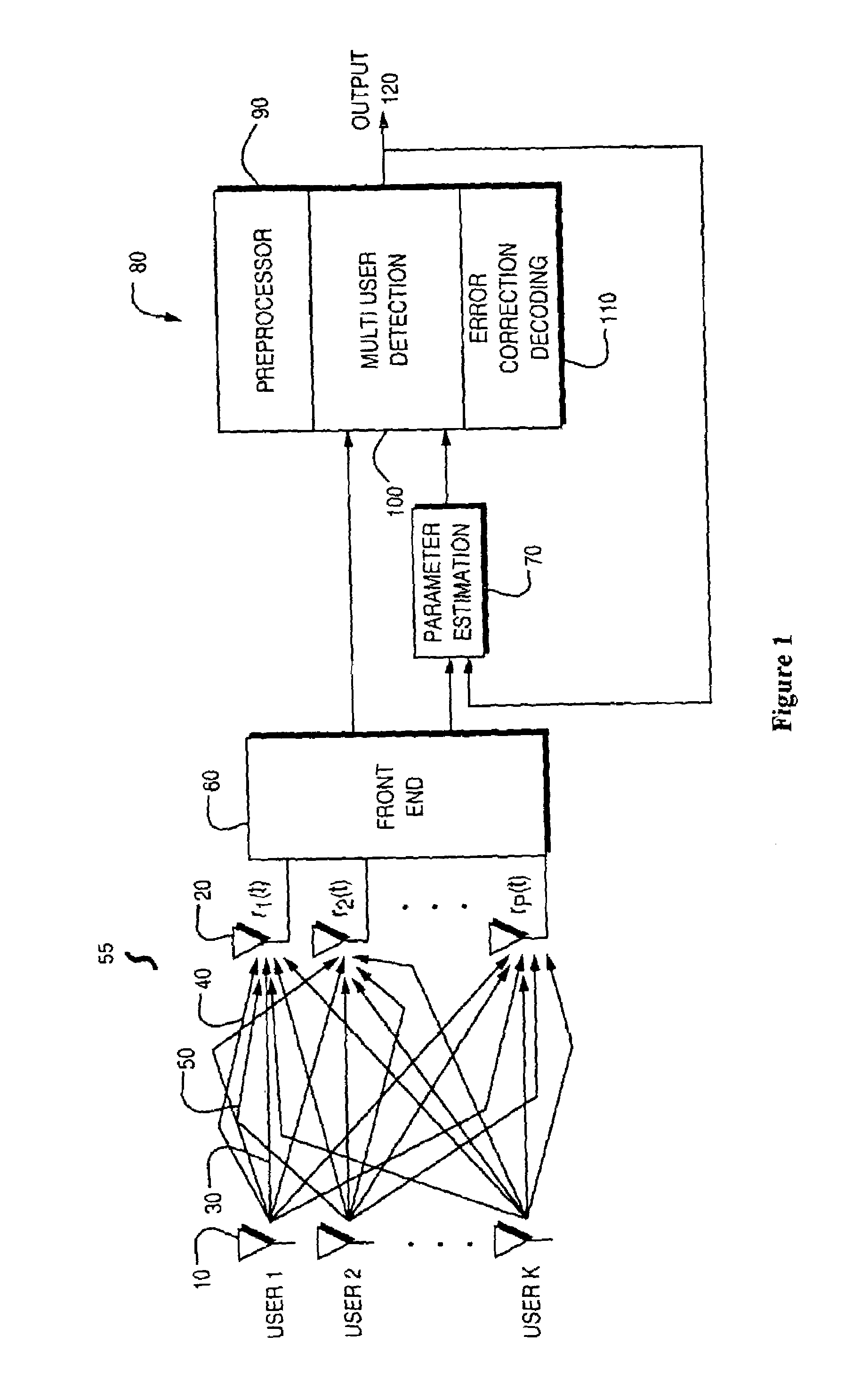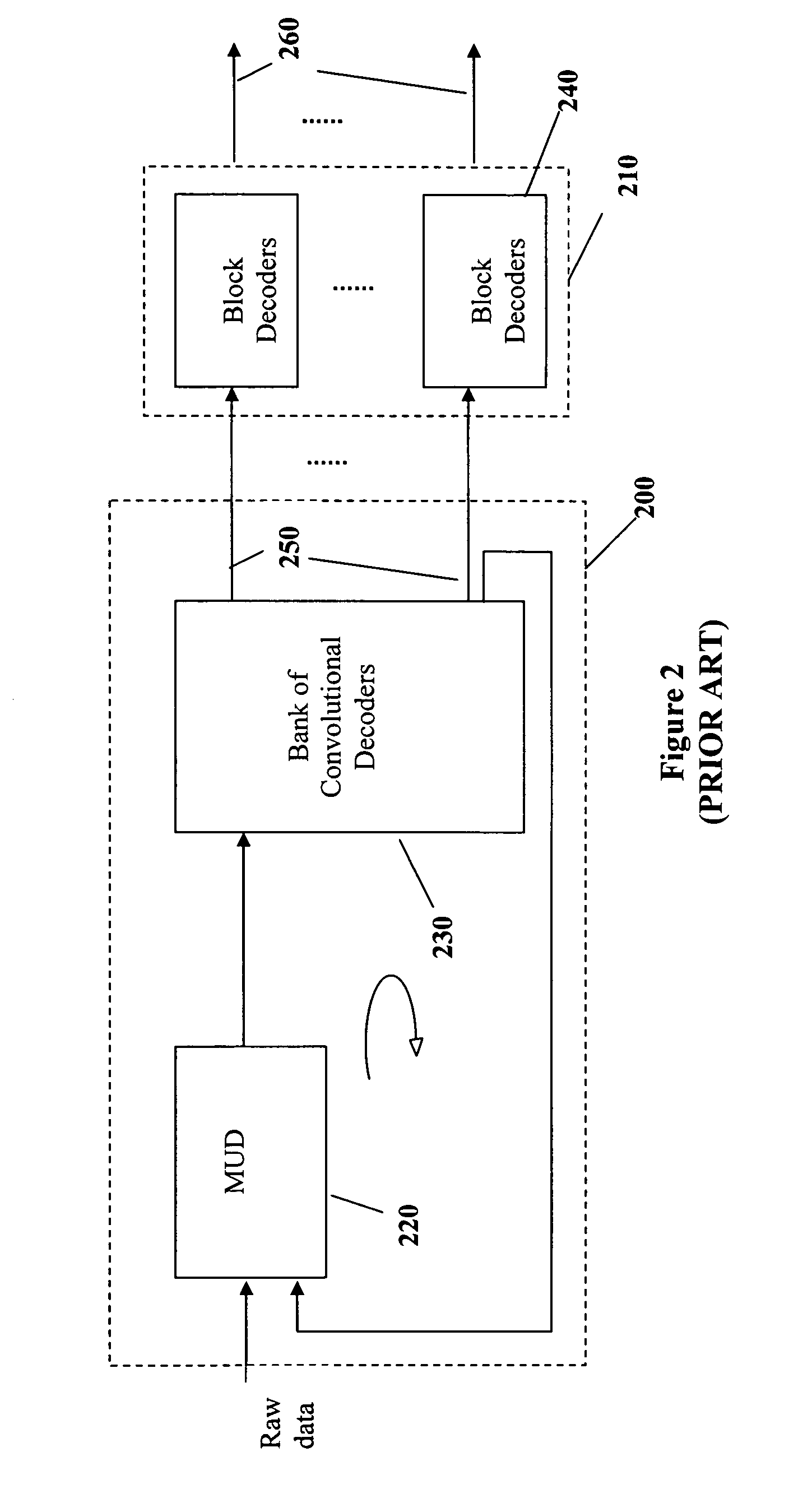Reduced complexity multi-turbo multi-user detector
a detector and multi-user technology, applied in the field of decoding, can solve the problems of increasing the problem of extracting more information signals within a limited bandwidth, inability to process the data in the receiver in real time, and co-channel interference refers to signals received from other users
- Summary
- Abstract
- Description
- Claims
- Application Information
AI Technical Summary
Benefits of technology
Problems solved by technology
Method used
Image
Examples
Embodiment Construction
[0081]The description of the embodiments of the invention has been presented for the purposes of illustration and description. It is not intended to be exhaustive or to limit the invention to the precise form disclosed. Many modifications and variations are possible in light of this disclosure. It is intended that the scope of the invention be limited not by this detailed description, but rather by the claims appended hereto.
[0082]A typical communication wireless application for the present invention is shown in FIG. 1, wherein a number of users (1 to K) generate signals that are sent by transmitters 10 into free space. There is normally a noise component 55 that is introduced from the environment of a random nature in the received signal. While any noise 55 that has a repeatable or non-random nature can be eliminated or minimized through processing, random noise elements are reduced in other manners. The various signals are received at antennas (1-p) 20, wherein there is one signal...
PUM
 Login to View More
Login to View More Abstract
Description
Claims
Application Information
 Login to View More
Login to View More - R&D
- Intellectual Property
- Life Sciences
- Materials
- Tech Scout
- Unparalleled Data Quality
- Higher Quality Content
- 60% Fewer Hallucinations
Browse by: Latest US Patents, China's latest patents, Technical Efficacy Thesaurus, Application Domain, Technology Topic, Popular Technical Reports.
© 2025 PatSnap. All rights reserved.Legal|Privacy policy|Modern Slavery Act Transparency Statement|Sitemap|About US| Contact US: help@patsnap.com



